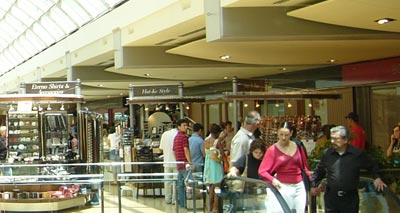 |
 |
|
|
Split Testing
Split testing or A/B testing is when you test two (or more) different situations: situation A vs. situation B.
It is important that you just change one thing and one thing only. This is a common thing to do when you are creating a business website.
By changing only one element then it is more than likely that that element of the web page is having the positive/negative effect on your campaign if you suddenly get different results with that element changed.
Obviously it goes without saying that as the website owner you want the best for your website - websites can take hours to create and hours to maintain...wouldn't it be great if you knew that making one simple change could increase your sales by 30%, your sign-ups to your newsletter by 20% or whatever you wanted. A small percentage increase or decrease can have a dramatic effect on your bottom line.
In an ideal testing environment you would carry out the test at exactly the same time.
If you want you can easily do this using an adwords campaign. By running two adwords campaigns at the same time you can take people to 2 different landing pages - landing page A and landing page B. After say 500 clicks on each page you can stop the campaign and then see what the results (how many products were sold / how many signed up / how many clicked on ads) are like. There are numerous free split testing tools on the internet as well as ones you can pay for.
What sort of things can you split test on your website?
Well the list is endless but here is a quick bullet list in no particular order (we used to have text - but after a split test people clearly preferred the bullets!):
- Logos
- Positioning of content
- Headings
- Testimonials
- Call to action text
- Call to action buttons
- Links
- Images
- Social Websites
- Awards
- Security
- Contact Information
- Paragraph text
- PPC text
Effect on SEO
This is definitely something to consider before you carry out any split tests - they can have a negative effect on your website in the long run - and that clearly is the last thing you want. Clearly when you are split testing two different pages with only one difference then there is obviously by the very nature a lot of content which is duplicated. Therefore you need to use rel=canonical link. Taken from Google this is how you use it:
You can specify a canonical URL like this:
- Add a rel="canonical" link to the <head> section of the non-canonical version of each HTML page.
To specify a canonical link to the page http://www.example.com/product.php?item=swedish-fish, create a <link> element as follows:
<link rel="canonical" href="http://www.example.com/product.php?item=swedish-fish"/>
Copy this link into the <head> section of all non-canonical versions of the page, such as http://www.example.com/product.php?item=swedish-fish&sort=price.
This way google will ignore this page from it's search results: http://www.example.com/product.php?item=swedish-fish&sort=price
and make sure that http://www.example.com/product.php?item=swedish-fish is the page that gets the best search engine position and not penalise it either which is the crucial thing.
So if you aren't sure about whether an element of your web page is working or not then give split testing a try out.
Some common things that have been tried to work after split testing are:
- If you want sign ups - then just try asking for the e-mail address rather than first/last name and address and phone numbers...you will likely get more sign-ups as nobody in particular likes filing in forms
- Make your call to action more noticeable - make it a big red button rather than a delicate pastel button. Don't be afraid to spell out what the button does - "Buy this shirt now" instead of "Purchase".
- Personal photos are usually seen in a more favorable light than standard stock images.
- Offer discounts at the Buy Now point and put the buy now button above the fold of the page rather than just at the bottom.
- Telephone number/address - having a telephone number and address on your pages can re-assure your customers
- Security/awards - Again these go to re-assure your potential customers that you are a trusted site and it is safe for customers to use their credit card on your website.
Remember these are just a few tips that have been shown to increase sign-ups and/or sales - they might not work for your site.
Related articles
- Advertise your business
- Advertise your business online
- Low cost start up businesses
- Working out your PPC costs
